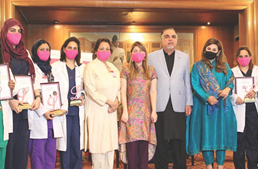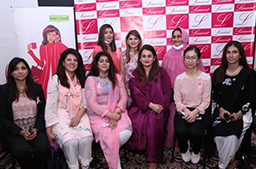The phrase “the youth is the future” is nothing more than an exploitative slogan.
Political parties see young people as nothing more than a means to an end—namely, the fulfillment of their own self-interested goals.
ISLAMABAD: The phrase “the youth is the future of any country” is a familiar catchphrase that government officials always remember to emphasize when they make public pronouncements. Involving young people in the formulation and execution of policies is a top goal for international, regional, and local organizations working in the field of international development, including the United Nations. In a similar vein, the mainstream media places a strong focus on the part that young people play in determining and molding the destiny of the nation. There are specific allusions made to the youth’s capacity to take on leadership roles throughout the platforms of many political parties. In a word, every performer depicts the younger generation as a valuable asset with unrealized potential.
However, when one takes a closer look at the actual chances that are presented to the young people, it becomes clear that a significant portion of what is promised is merely hyperbole. In point of fact, these players do not care about young people, and as a result, they do not formulate policies in accordance with this concern. They see young people as nothing more than a tool to help them attain their own self-serving goals.
For instance, political parties are acutely aware of the fact that the youth will play a major role in the outcome of future elections. This is something that political parties are quite conscious of. This is made abundantly clear by the fact that there are 48 million people whose ages fall within the range of 18 to 30 years, and an additional 36 million whose ages fall within the range of 30 to 40 years.
In addition, young people are a dynamic force that has the ability to enliven political rallies, as well as construct and spread a political narrative with pinpoint accuracy among the general populace. As a result, political parties develop strategies to win the support of young people in order to win elections. This is accomplished through formulating appealing phrases that evoke feelings of patriotism, national pride, and employment possibilities in the name of the country.
Many organizations working in international development and think tanks view young people as useful tools for luring financial support from donors. However, if they have the necessary cash, they hire consultants who can come up with appealing slogans to utilize in their advocacy campaigns. For instance, talking about technology, the internet of things (IoT), and online shopping is very popular these days. There is absolutely nothing wrong with promoting technological progress or encouraging young people to embrace opportunities given by the Fourth Industrial Revolution. Both of these things should be encouraged. However, a lack of awareness of the dynamics of the local environment will result in a total waste of time and money, as well as the unavoidable production of worry among the younger generation.
Let’s begin with the predicament that our educational system finds itself in. The fact that Pakistan only has a literacy rate of 62.3% overall is really disappointing to learn. This indicates that there are 86.3 million persons in the country who have not completed their formal education. In addition, there are 22.8 million children who are not enrolled in any form of formal schooling. In a same vein, madrassas are now home to millions of young students. Despite the fact that Article 37-B and Article 25-A of the Constitution make it very clear that the state is obligated to offer education to each and every kid, this has sadly not been the case.
According to Pakistan’s Constitution, Article 37-B, “The State shall be responsible for the eradication of illiteracy and provision of free and compulsory education up to the secondary level, within minimum possible time,” states that “the State shall be responsible for the eradication of illiteracy.”
In the same vein, Article 25-A of the Constitution, which deals with the right to education, stipulates that “the state shall provide free and compulsory education to all children of the age of five to sixteen years in such a way as may be prescribed by legislation.”
Sadly, the public sector is privatising education rather than shouldering the duty that should fall on its shoulders. This is in direct contradiction to the Constitution of Pakistan and should not be allowed to exist. Private educational establishments are thriving like never before as a direct result of government initiatives that encourage privatisation.
The Pakistan Education Statistics Report indicates that 44 percent of children, or 22.7 million, are enrolled in private schools. It is astounding to see that 38% of private institutions are able to house 44% of young people. In spite of the fact that private schools and universities are significantly more costly than public ones, the majority of parents opt to enrol their children in private educational settings. This is a reflection of the reality that people do not trust the institutions that are run by the government. Additionally, the state ought to regard this as a major cause for concern.
There is still a lot of uncertainty around the quality of education, which is a national source of concern. For instance, traditional educational institutions do not make any efforts to teach their pupils skills that are market-oriented. As a direct consequence of this, they are graduating students with few or no practical skills.
Importantly, there is a dearth of organisations dedicated to professional and personal development. According to the report on Education Statistics, the private sector is responsible for the operation of 56% of the total number of skill development and vocational institutes across the nation. In addition, the government is unable to rally the business community to fulfil its responsibilities in accordance with the genuine intent underlying Pakistan’s Apprenticeship Ordinance. This is a major shortcoming of the legislation.
These characteristics make it more difficult and expensive for the average person to learn new skills, which in turn contributes to a reduced creation of human capital. In light of this, Pakistan comes in at position 144 on the list of 173 countries in terms of the human capital index.
Because of these conditions, the vast majority of college-educated young people are unable to locate opportunities that can provide them with enough means of subsistence. This dissatisfaction with the lack of economic opportunities opens the door to exploitation in the form of various slogans, including those that target ethnicity, sub-nationalism, group identity, and religion. Moreover, this dissatisfaction opens the door to frustration.
In conclusion, Pakistan needs to realise that the youth, who are currently being referred to as an asset, will turn into a significant liability in the future if the necessary actions are not taken in order to prevent this from happening.
The advent of fifth generation warfare (also known as FGW) has made the situation much worse. The younger generation is both a primary contributor to and a target of FGW. Young people who are lacking in education and skills pose a significant risk to the nation’s safety and security. And in order to halt this development, Pakistan needs to step up its preparations for battle.
This article was written by a political economist who is currently serving as a visiting research fellow at Hebei University in China.










































